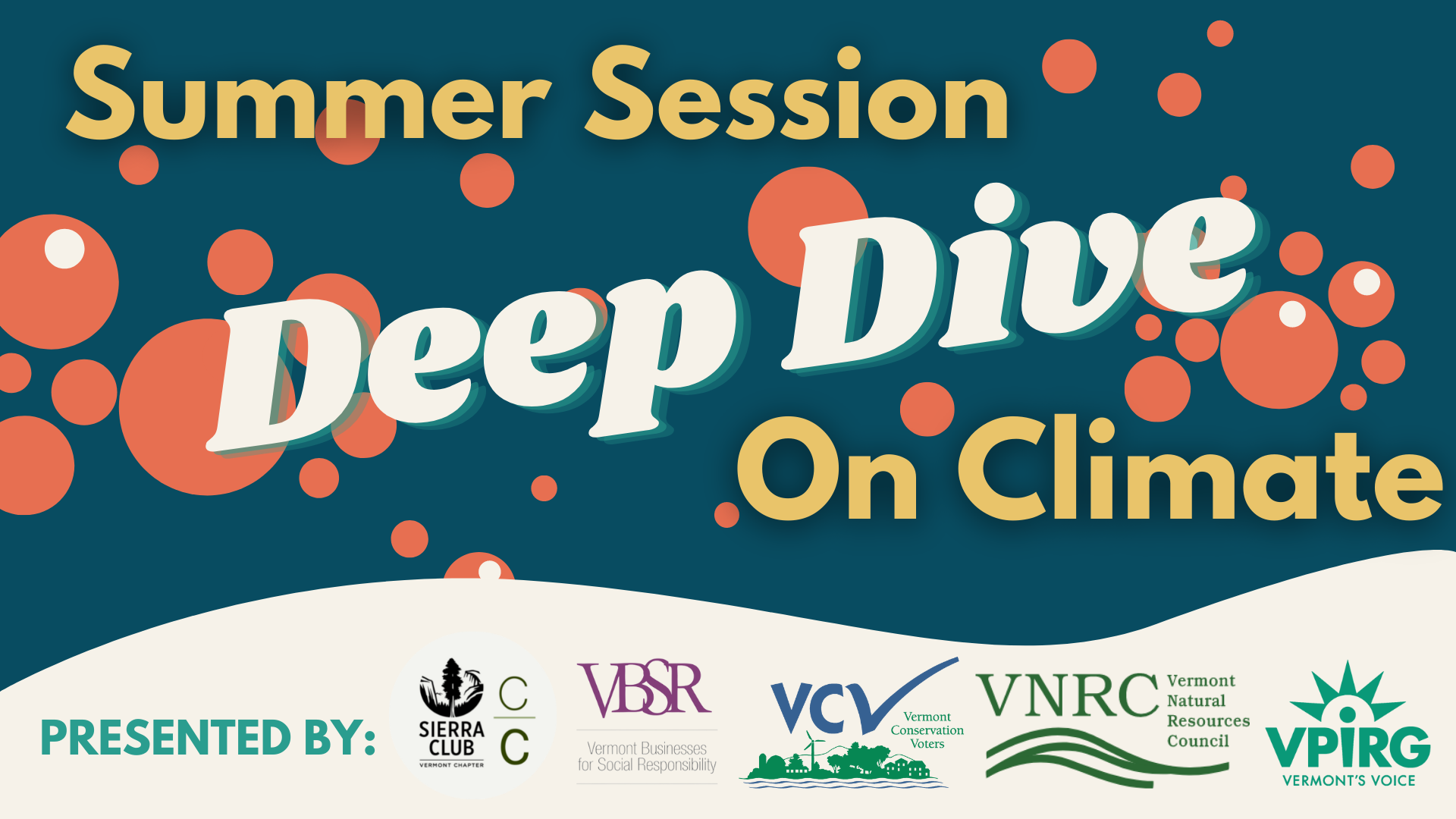The final installment of our Summer Session Deep Dive on Climate Series
As we move towards an electrified transportation future, it’s important to remember that not everybody wants, needs, or can afford a personal electric vehicle – and we can and must do far more to give Vermonters viable alternatives to driving cars and trucks everywhere they need to go. One of the best ways to tackle the transportation sector’s carbon pollution problem is to give Vermonters alternatives to low occupancy, high carbon-footprint vehicles to move around the state. Simply put, 25 people on a bus, in carpools, or on bicycles take up significantly less space on the road and pollute less than 25 people in their own personal vehicles.
During the 2022 legislative session the state legislature made several big investments in Vermont’s public transportation and infrastructure to reduce reliance on greenhouse-gas producing vehicles, expand access to alternative forms of transportation, keep urban public transit fare-free, and much more. These investments are a good start, but as with so many areas of climate policy in Vermont, if we are going to meet our climate requirements we need to do more.
Public Transit Program
The Transportation Bill authorized $50,239,278 for public transit uses throughout the State, a 9.6 percent increase over fiscal year 2022 levels. Included in the authorization are:
(A) Go! Vermont. With an authorization of $873,000, Go! Vermont will support transportation demand management (TDM) strategies, including the State’s Trip Planner and commuter services, to promote the use of carpools and vanpools.
(B) Mobility and Transportation Innovation (MTI) Grant Program, with an authorization of $1,500,000, this program will continue to support projects that improve both mobility and access to services for transit-dependent Vermonters, reduce the use of single-occupancy vehicles, and reduce greenhouse gas emissions. At least $1,250,000 of this authorization shall go towards microtransit projects. We advocated for $10 million for this program because we saw the need to create flexible and innovative transit options, however, the Agency stated there was not enough demand for the program.
(C) One-time public transit monies were authorized and set at $1,200,000 to continue fare- free transit in urban routes. This authorization will allow public transit providers to, as practicable, provide zero-fare public transit on routes other than commuter and LINK Express and restore service to pre-COVID19 levels. Ideally, we would have preferred funding for both route restoration and fare-free service, so we hope transit providers will continue with the intentions of fare-free service.
Bike and Pedestrian Programs
The Transportation Bill Act, in concert with 2020 Transportation Bill provides for a fiscal year expenditure, including local match, of $19,793,776, which will fund 29 bike and pedestrian construction projects and 18 bike and pedestrian design, right-of-way, or design and right-of-way projects for construction in future fiscal years. The construction projects include the creation, improvement, or rehabilitation of walkways, sidewalks, shared-use paths, bike paths, and cycling lanes; funding for the small-scale municipal bicycle and pedestrian grant program for projects selected during the fiscal year; funding for projects funded through the Safe Routes to School program; and funding for education and outreach to K–8 schools to encourage higher levels of walking and bicycling to school.
Vermont State Standards. The Transportation Bill requires the Agency to develop a budget and plan to update the 1997 Vermont State Standards, which provide design directions for accessible and safe streets. Updating the VSS will provide a new framework that better support the implementation of complete streets for all road users and types of sustainable transportation.
Bicycle and Pedestrian Planning Integration Program. The Transportation Bill requires the Agency to establish a program to support the continued development and buildout of bicycle and pedestrian infrastructure.
Transportation Alternatives Program
The Transportation Bill provides for a fiscal year expenditure of $5,665,880, including local funds, which will fund transportation alternatives construction projects and transportation alternatives design, right-of-way, or design and right-of-way projects. These projects involve environmental mitigation related to clean water or stormwater concerns or that involve bicycle and pedestrian facilities.
Rail Program. The Transportation Bill authorized $35,363,182, including local funds, for intercity passenger rail service and rail infrastructure throughout the State, including the return of New York City–Burlington passenger rail service.
Carbon Reduction Program. The Transportation Bill requires the Agency of Transportation to consult with the Vermont Climate Council and ensure that within the Agency of Transportation’s Proposed Transportation Program for fiscal years 2024, 2025, and 2026 all federal monies (roughly $5 million a year) that are proposed by the State for expenditure under the Carbon Reduction Program are allocated toward projects that align with the recommendations of the Climate Action Plan (CAP).
These investments are a good start – another step towards a truly climate friendly transportation system in Vermont – but we have far more work to do. We will be advocating for more much-needed action in the transportation sector to address carbon pollution when the next legislative session starts.
Thank you for tuning in every week for our Summer Session Deep Dive on Climate Series! If you missed any of the previous deep dives, you can find them all here. As all of these important investments continue to be rolled out, stay tuned for many more opportunities to learn, engage, and advocate to your representatives in the Legislature about more of the climate investments Vermont needs. We couldn’t do this work without you!




